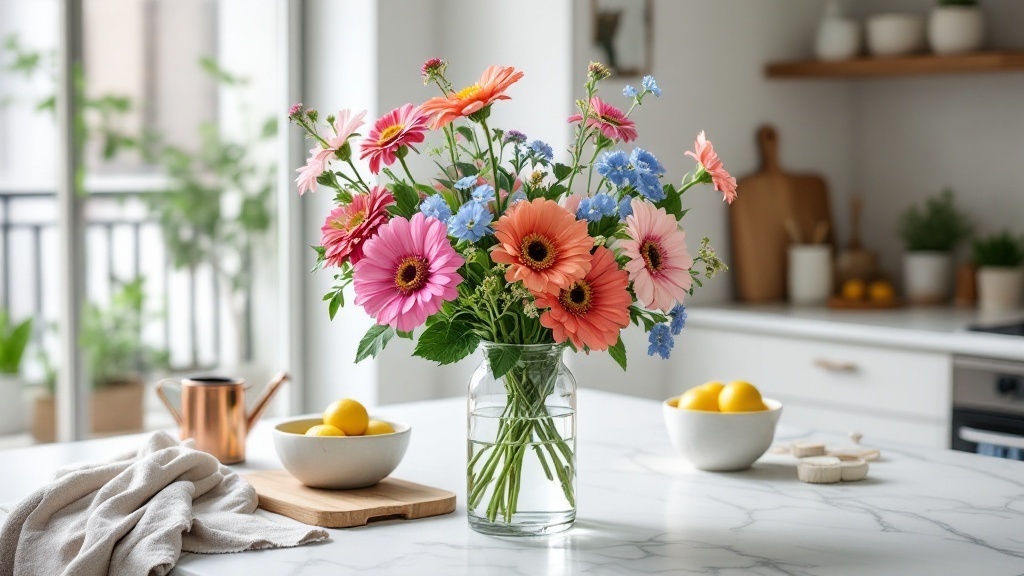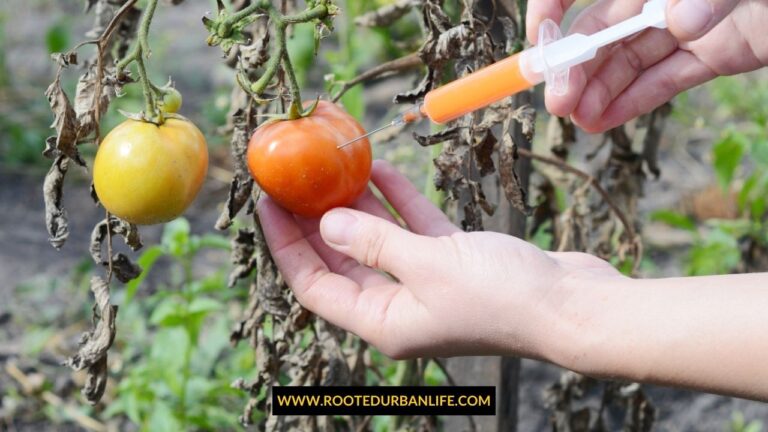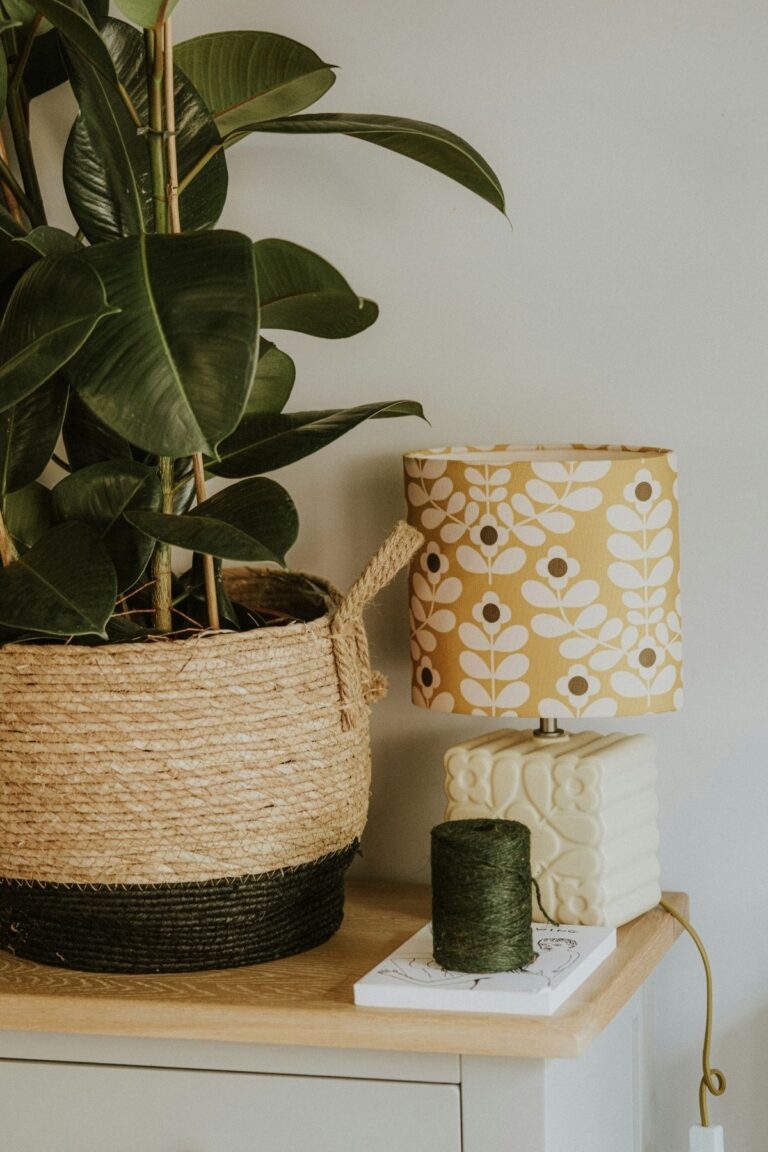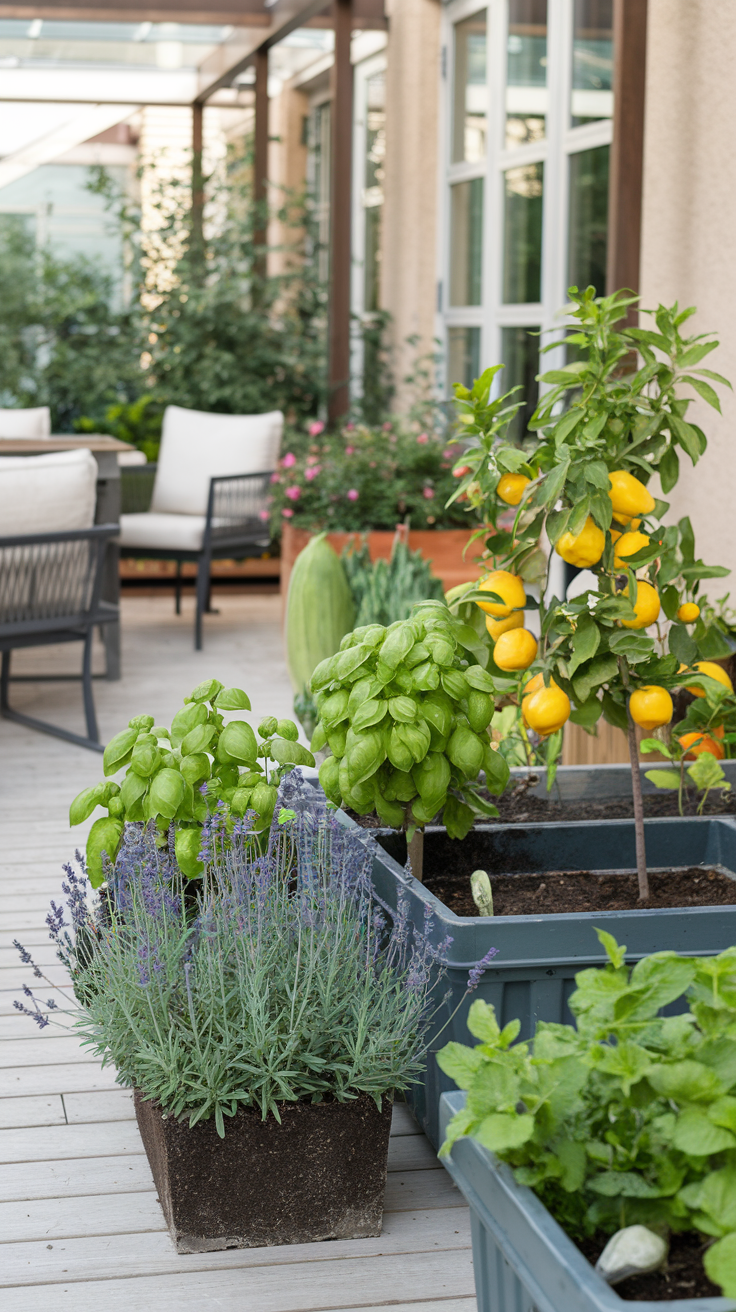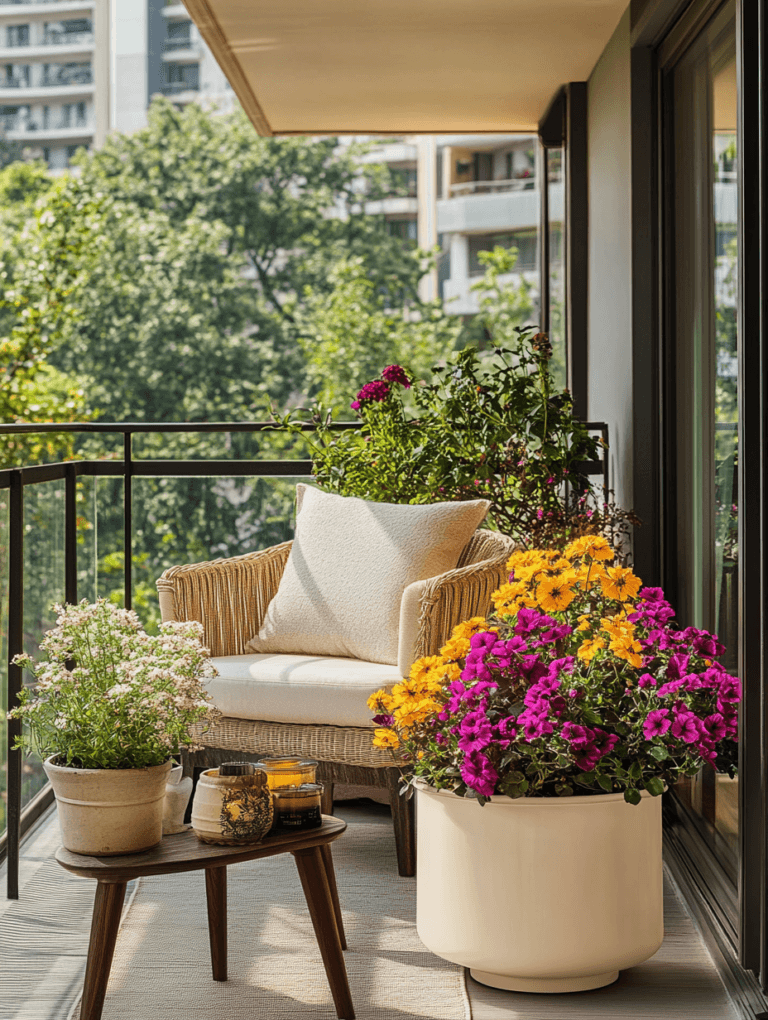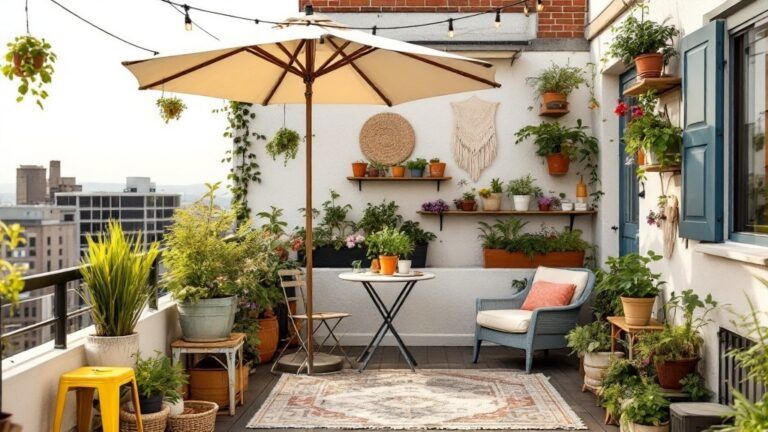Balcony Blooms: 7 Easy-to-Grow Cut Flowers for Small-Space Gardeners
Girl, you CAN have gorgeous fresh flowers without a yard—I promise!
The Dream vs. Reality
Let’s be honest—scrolling through Instagram and seeing those dreamy flower gardens when you’re living in an apartment can feel like a special kind of torture, right? I used to press my nose against my phone screen, sighing at lush peony borders and thinking, “Must be nice to have actual land.”
But here’s the tea: after some serious trial and error on my own postage-stamp balcony, I discovered that growing stunning cut flowers in containers isn’t just doable—it’s actually kind of addictive! And trust me, if I can do it between full-time work and binge-watching my shows, you definitely can too.
In this bestie-to-bestie guide, I’m sharing:
- Which flowers actually thrive in pots (no false promises!)
- The must-have supplies that won’t overtake your storage closet
- Step-by-step growing instructions even a plant killer can follow
- How to turn your homegrown blooms into bouquets that’ll make your coworkers ask, “Wait, YOU grew these?!”
Ready to save a small fortune on store-bought bouquets while feeling like the plant goddess you were meant to be? Let’s do this!
| Disclosure: If you shop from my article or make a purchase through one of my links, I may receive commissions on some of the products I recommend at no additional cost to you. |
The Shopping List (Because Who Doesn’t Love Those?)
Let’s keep it simple—here’s what you actually need:
The Non-Negotiables:
- Containers: 12-15″ diameter pots with drainage holes (cute ceramic or budget-friendly plastic)
- Potting mix: Quality soil made for containers—skip the bargain stuff
- Watering can: Something lightweight so watering doesn’t become arm day
- Hand trowel & pruning shears: The basics that make gardening so much easier
The “Treat Yourself” Extras:
- Liquid fertilizer: The plant equivalent of a green smoothie
- Support stakes: For taller flowers that need a little help (don’t we all?)
- Self-watering containers: For when life gets busy or you love weekend getaways
The Flowers That Won’t Ghost You
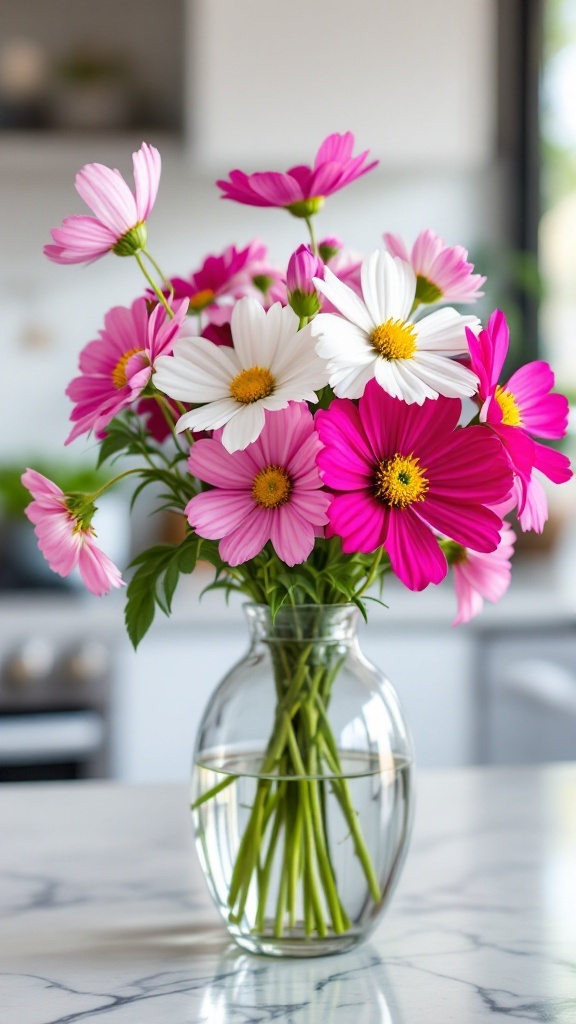
1. Cosmos: The Overachiever Friend
These daisy-like blooms produce flowers non-stop and look amazing in summer arrangements.
Quick How-To: Plant seeds directly in a 12″ deep container with good drainage, place in full sun, thin seedlings to 12″ apart, and water when the top inch of soil feels dry. Use a small support grid to prevent flopping after summer storms.
Quick Visual: Cosmos blooming on your balcony, a fresh-picked vase on your kitchen counter—your own flowers, your own quiet morning joy. That expensive-looking arrangement in your latest selfie? Yeah, you grew that.
2. Sweet Peas: The Romantic One
Their intoxicating fragrance and ruffled blooms bring cottage-core vibes to even the most urban balcony.
Quick How-To: Use a deep container with a trellis, soak seeds overnight before planting in early spring, keep soil consistently moist, and pinch tops at 6″ tall for bushier growth. The more you cut, the more they bloom!
Quick Visual: A soft curtain of sweet peas climbing your railing, their scent floating through the window. A handful in a jar on your nightstand—like a garden-scented dream, no candle can compete.
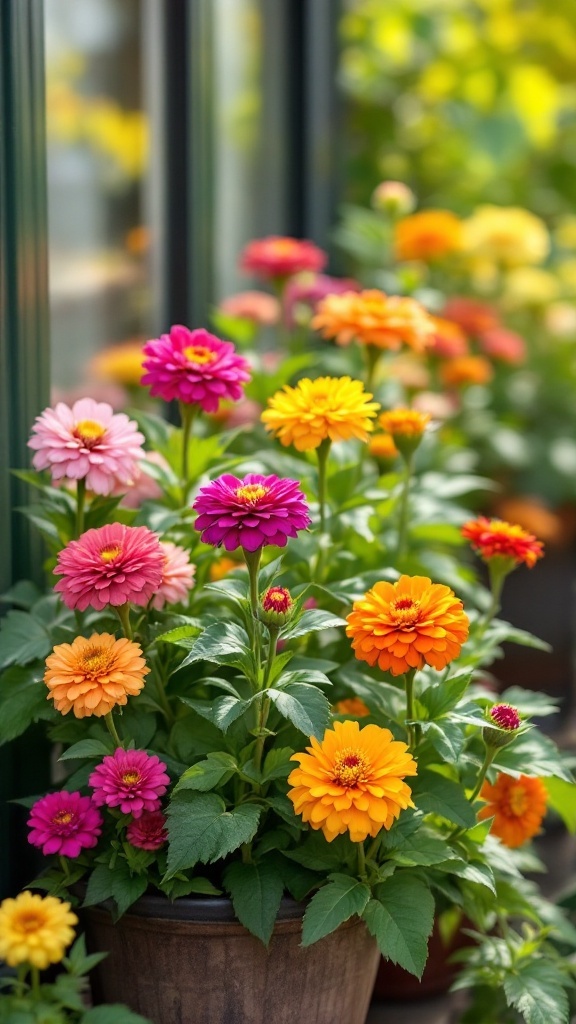
3. Zinnias: The Life of the Party
When summer heat has you melting, zinnias are just getting started with vibrant colors that last forever in vases.
Quick How-To: Plant after all frost danger in your sunniest spot, water at the base only (they hate wet leaves), and deadhead religiously. Add slow-release fertilizer at planting time for a non-stop zinnia factory.
Quick Visual: Your balcony bursts with zinnias in tropical shades—magenta, tangerine, coral. They stand tall like they know they’re fabulous. For wine night, you grab a bunch for a show-stopping centerpiece. “Bought them?” Nope. You grew them.
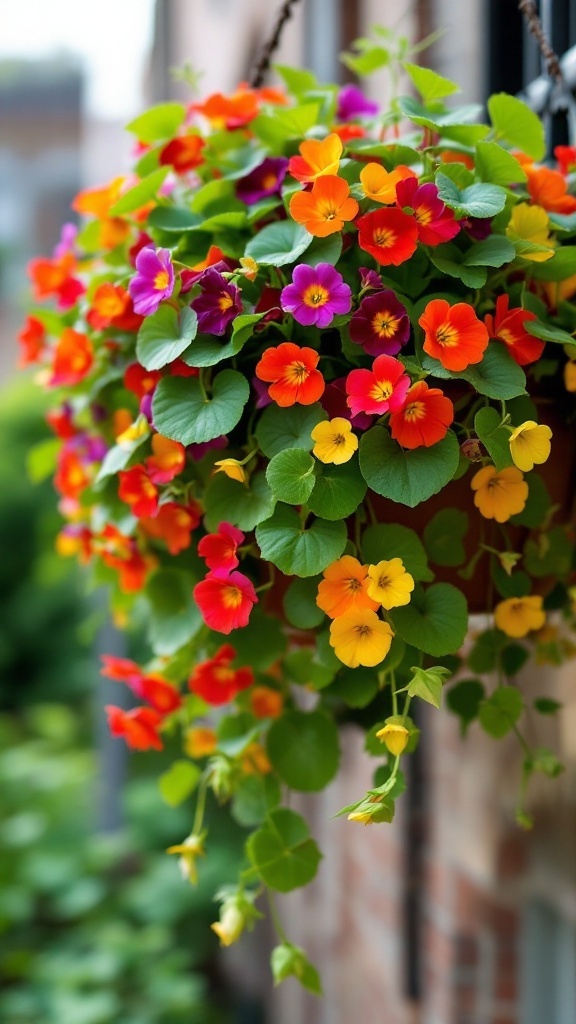
4. Nasturtiums: The Multi-Talented Friend
Not only do they cascade beautifully from hanging baskets, but you can actually eat their peppery flowers!
Quick How-To: Choose containers that allow for dramatic trailing, nick the seed coat and soak overnight, position in sun to partial sun, and skip heavy fertilizer (too much nitrogen means all leaves, no flowers).
Game-Changer: Self-watering hanging baskets have seriously saved my nasturtiums (and my sanity).
Quick Visual: Nasturtiums spill from railings in sunset shades, softening your space with their wild, trailing vines. At dinner, you pluck a few blooms to top your salad. Instant gourmet vibes—minus the restaurant bill.
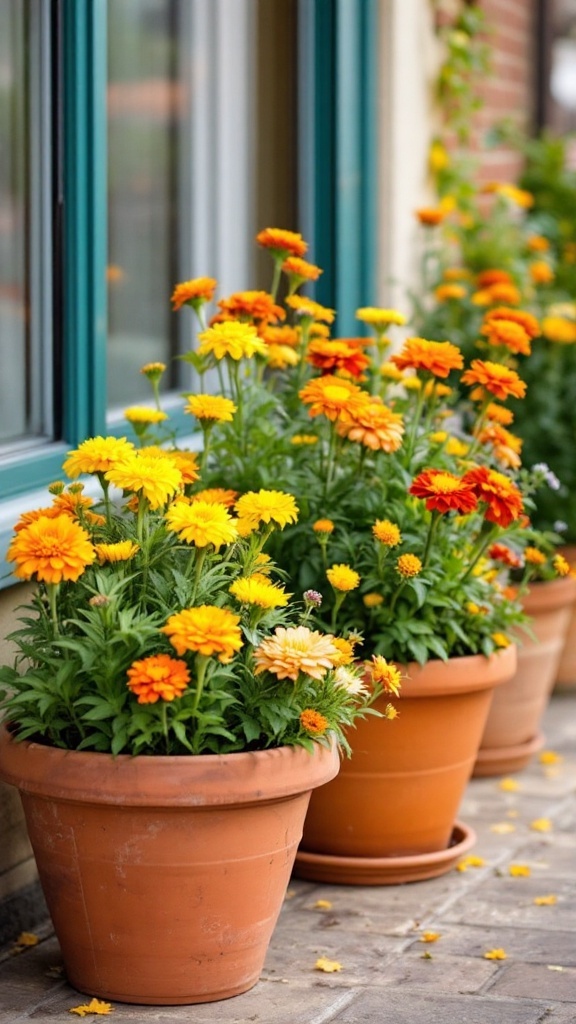
5. Calendula: The Reliable BFF
These sunny blooms stick around forever, bloom like crazy, and last ages in vases. Plus, they have amazing skin-healing properties!
Quick How-To: Use 8″ deep containers, sow seeds directly, place in full to partial sun, keep soil consistently moist until germination, and harvest in the morning when fully open for maximum vase life.
What Actually Works: Adding organic compost tea once a month gives calendula that extra glow-up without harsh chemicals. A watering can with a gentle shower head makes this super easy.
Quick Visual: Terracotta pots glow with calendula’s golden blooms, opening with the sun like tiny morning rituals. You snip a few for the bathroom, dry petals for DIY face oil, and feel like a low-key wellness influencer—without the hashtag hustle.
6. Snapdragons: The Sophisticated One
They add height and drama to your balcony and bring unique texture to arrangements.
Quick How-To: Start with nursery plants for quicker results, use rich potting mix, position in morning sun but afternoon shade, and stake taller varieties so they don’t topple. Small bamboo stakes and soft plant ties provide invisible support.
Quick Visual: Elegant snapdragons rise from glossy containers on your balcony, their ombré blooms unfolding from bottom to top for weeks of beauty. When cut and brought inside, they create minimalist arrangements that make your home look magazine-worthy—proof that sophisticated style starts with what you grow.
7. Bachelor’s Buttons: The Cool, Low-Maintenance One
Their true-blue color is rare in the flower world, and they thrive on neglect—perfect for busy weeks!
Quick How-To: Choose containers with excellent drainage, sow seeds directly after frost danger passes, place in full sun, and water sparingly once established. Add horticultural sand to your potting mix for better drainage.
Quick Visual: True-blue bachelor’s buttons sway on slender stems, their feathery foliage adding texture to your balcony. Snip a few for indoor vases—paired with sweet peas or zinnias, they become designer-worthy bouquets you grew yourself.
Stuff I Learned the Hard Way (So You Don’t Have To)
The temptation to overcrowd is real: I initially stuffed way too many seeds in each container. They competed for nutrients, got leggy and sad. Now I follow spacing guidelines religiously.
Don’t be precious about cutting: Regular harvesting signals the plant to make MORE flowers! Cut every 2-3 days and enjoy both prettier plants and indoor arrangements.
The drainage layer is non-negotiable: Add a layer of pebbles or broken pottery at the bottom of each pot before adding soil. This simple step has saved countless plant lives during rainy weeks.
The Questions You’re Probably Asking
Q: How often do I actually need to water these plants? A: Container plants dry out faster than in-ground gardens. If the top inch feels dry, it’s watering time. During heatwaves, you might need to water once or even twice daily.
Q: Can I just reuse last year’s potting soil to save money? A:Reusing old soil is like wearing someone else’s gym clothes—it might work, but it brings problems you don’t need. Old soil harbors diseases and lacks nutrients. Treat your flowers to fresh digs each season.
Q: Do I really need special plant food? A:Think of fertilizer as a green smoothie—not absolutely required, but definitely helps! Use a balanced, water-soluble formula diluted to half-strength every 2-3 weeks.
Q: How do I keep bugs from eating my flowers? A:Check your plants regularly, spray with water to knock off aphids, and consider introducing ladybugs for natural pest control. For stubborn problems, insecticidal soap works wonders.
The Takeaways (For When You Just Need the Bullet Points)
Size matters: Successful cut flower gardening starts with containers that are big enough (12-15″ diameter minimum) and have proper drainage holes.
Choose flower friends wisely: Not all flowers play well with containers, but cosmos, zinnias, sweet peas, nasturtiums, calendula, snapdragons, and bachelor’s buttons are your guaranteed squad.
Cut like you mean it: Harvest in the morning when stems are hydrated, remove lower leaves, and place immediately in clean water for bouquets that last.
Mix it up: Create balanced arrangements by combining different flower shapes (stars, spikes, and airy elements) for bouquets that look professionally designed.
Arranging 101: From Garden to Vase
Now that you’ve grown these gorgeous blooms, here’s how to make them shine:
- Harvest like a pro: Cut in the early morning using sharp, clean scissors. Cut stems at an angle and plunge immediately into water.
- Give them a spa moment: Strip off leaves that would sit below the waterline and let flowers drink in a cool location for a few hours.
- Choose vessels with personality: Bud vases, vintage bottles, or even pretty jars work perfectly. For larger displays, use vases with narrower necks.
- Build in layers: Start with focal flowers (like zinnias), add medium blooms (like calendula), and finish with delicate touches (like sweet peas) for that “just picked” vibe.
- Keep it fresh: Change water every day or two and re-cut stems to extend vase life.
Remember—sometimes the simplest arrangements make the biggest impact. A single perfect stem in a bud vase can be just as gorgeous as a massive bouquet!
Next Steps on Your Gardening Journey
- Discover the Easiest Way to Grow Your Own Herbs Without a Backyard!
- Grow Up, Not Out: The Ultimate Beginner’s Guide to Vertical Vegetable Gardening in Small Spaces
- 23 Plants That Will Transform Your Balcony Into a Pollinator Paradise
The Shopping List (Because We All Love Shopping)
Ready to transform your balcony into a cut flower paradise? Here’s what you actually need:
- Fabric grow bags in different sizes (way cheaper than ceramic and better for plant roots)
- Quality potting mix specifically formulated for containers (worth the splurge)
- Slow-release organic flower fertilizer (because sometimes we forget to feed them)
- Simple glass bud vases for showing off your gorgeous blooms (thrift stores have the best ones!)
That overlooked balcony or tiny patio isn’t just outdoor storage—it’s your mini flower farm waiting to happen! With some decent containers, the right flower varieties, and a few basic supplies, you’ll have enough homegrown blooms to fill your home with fresh flowers all season long.
Don’t forget to show us your beautiful blooms. Drop photos of your container cutting garden or homegrown arrangements in the comments. And sign up for our newsletter for seasonal reminders and exclusive tips for balcony gardening.


